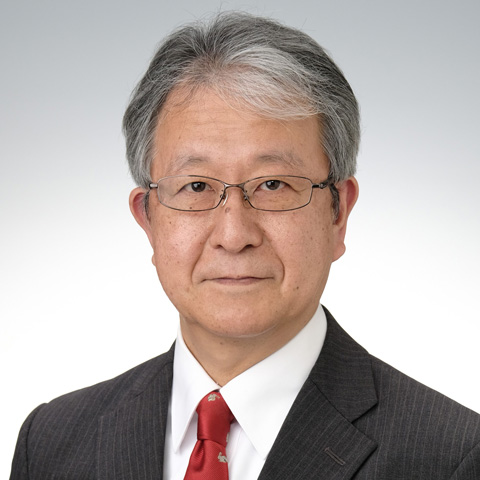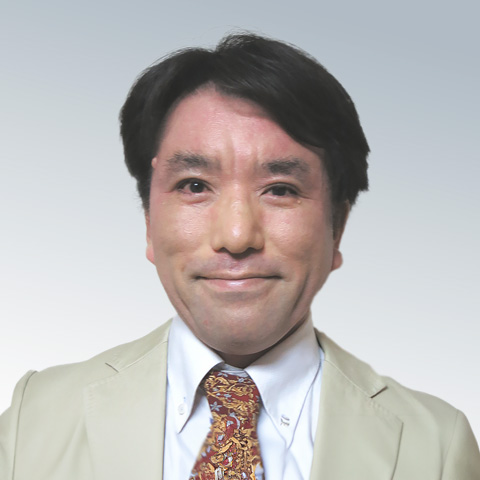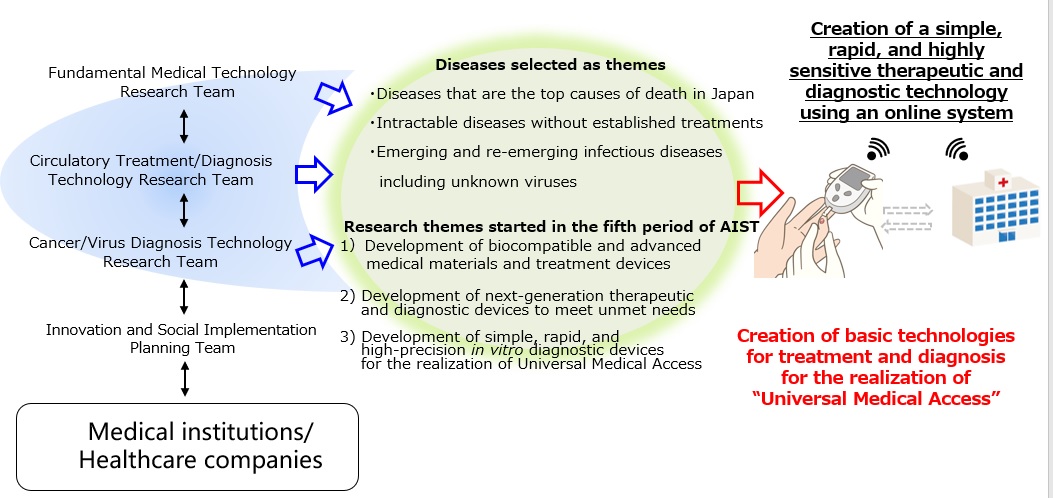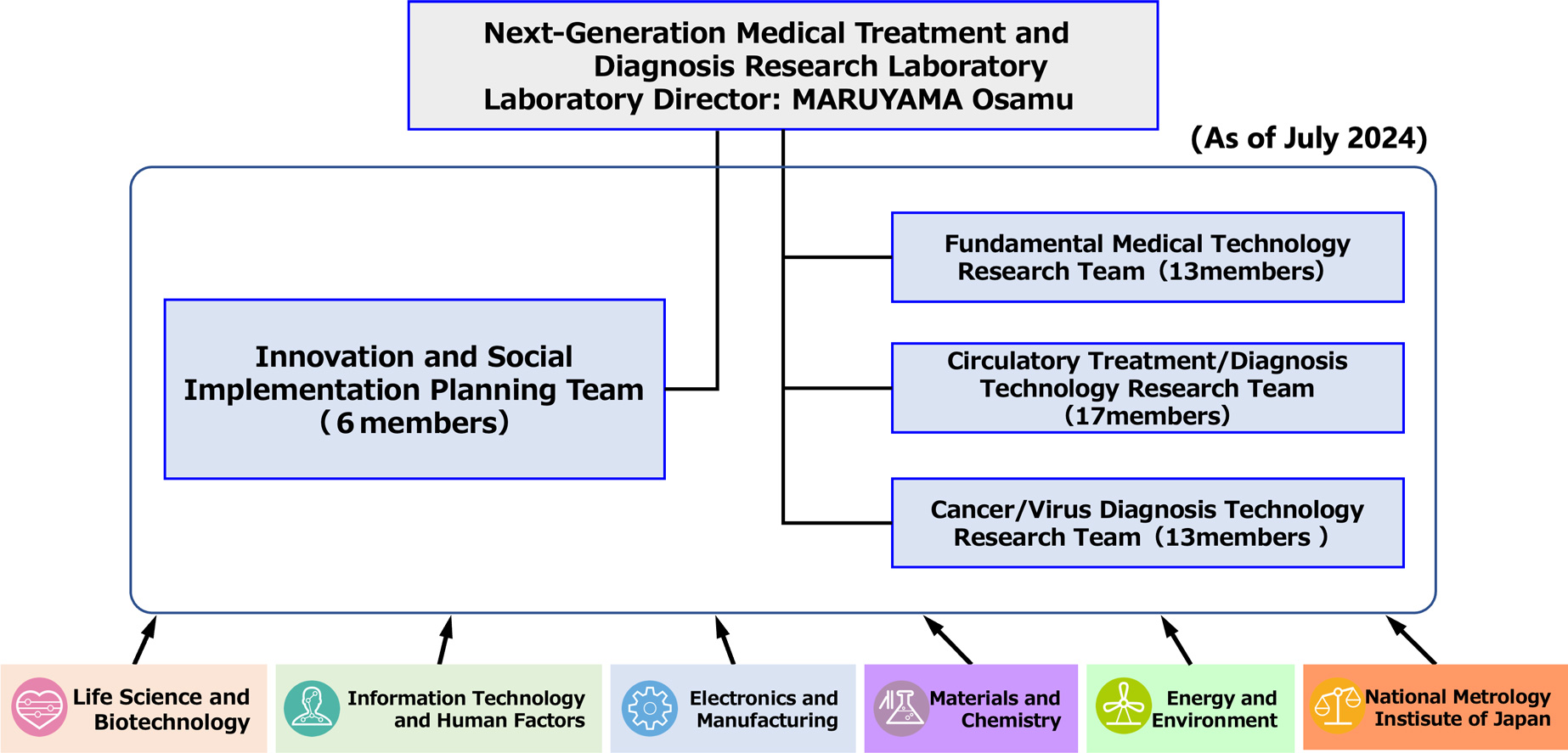Lab information
Message from the Director of the New-Generation Medical Treatment and Diagnosis Research Laboratory (Interdisciplinary Laboratory)


The New-Generation Medical Treatment and Diagnosis Research Laboratory (interdisciplinary laboratory) started in the fifth period of AIST as an interdisciplinary project to solve social issues, and is now in its third year. Our laboratory addresses social issues, particularly the declining birthrate and aging population, which may raise concerns regarding declining economic power due to a decrease in the workforce and widening health disparities between regions in Japan as it becomes the world’s first super-aged society. The key to solving such social issues is the realization of a lifelong active society, and extension of healthy life expectancy is essential to achieve this goal. To extend healthy life expectancy, it is crucial to realize Universal Medical Access, with which anyone anywhere in Japan can receive reliable medical care, which will enable the early detection of diseases and allow patients’ social reintegration without compromising quality of life even after disease onset. We are working on basic research aiming to realize Universal Medical Access. In addition, to address declining birthrates, we are also conducting research on male infertility, urine monitoring for neonates, and early diagnosis of developmental disorders.
The interdisciplinary laboratory is a virtual laboratory that encompasses the six fields of: Life Science and Biotechnology, Information Technology and Human Factors, Electronics and Manufacturing, Materials and Chemistry, Energy and Environment, and the National Metrology Institute of Japan. Unlike with real research units, such as research institutes and research centers, in this virtual laboratory, teams of cross-disciplinary researchers share research themes to solve the above-mentioned societal issues as projects, with the aim of quickly implementing them in society. The diversity of research themes has made it difficult to reach effective answers from within a single discipline. Therefore, regardless of the specific area of the research theme, teams comprising members with diverse expertise are expected to more quickly formulate countermeasures to social issues that can be implemented in society.
The interdisciplinary laboratory collaborates mainly with companies that develop pharmaceuticals and medical devices, and includes researchers from all research fields within AIST. We also actively collaborate with researchers at the Medical and Assistive Device Industries Office, the Ministry of Economy, Trade and Industry, universities, hospitals, and public research institutes. The interdisciplinary laboratory will strive to achieve Universal Medical Access by proactively promoting participation of cross-disciplinary researchers without limiting the specialization of research fields and by always exploring new problem-solving methods.
As of July 2024
Overview of the Interdisciplinary Laboratory
To address the social issues of declining birthrate and aging population, the interdisciplinary laboratory aims to realize a lifelong active society by achieving Universal Medical Access that enables anyone, anytime, anywhere, and under any circumstances to access high-quality medical care and elder care without anxiety. The laboratory focuses on diseases that are the leading causes of death in Japan, designated intractable diseases without established treatments, and unknown virus infections that remain a concern. The following are the specific themes of the three research teams: Fundamental Medical Technology Research Team, Circulatory Treatment/Diagnosis Technology Research Team, and Cancer/Virus Diagnosis Technology Research Team.
- Development of biocompatible and functional medical materials and therapeutic devices.
- Development of new-generation therapeutic and diagnostic devices to meet unmet needs.
- Development of simple, rapid, and high-precision in vitro diagnostic devices for the realization of Universal Medical Access.
On the basis of these three core pillars, AIST will make a concerted effort to develop technologies for treatment and diagnosis using medical materials to maintain and improve active mental and physical conditions over the period from medical intervention to convalescent rehabilitation. (Figure. Goals of New-Generation Medical Treatment and Diagnosis Research Laboratory).
Goals of the Fifth Period
- To create a new healthcare system for the realization of a lifelong active society, research teams will set concrete themes focusing on dealing with diseases that are the top causes of death in Japan, intractable diseases without established treatments, and unknown virus infections that remain a concern.
- Three research teams will work together to approach each subject.
- The Innovation and Social Implementation Planning Team will relay the research results of each subject to medical institutions and healthcare companies.
- To improve the quality of life of the people, research teams will embark on the creation of basic technology for treatment and diagnosis that contributes to the realization of Universal Medical Access.

Research Implementation System
With the aim of realizing Universal Medical Access, three research teams plus the Innovation and Social Implementation Planning Team, made up of members from six research fields, conduct research under the overall guidance of the laboratory director.
